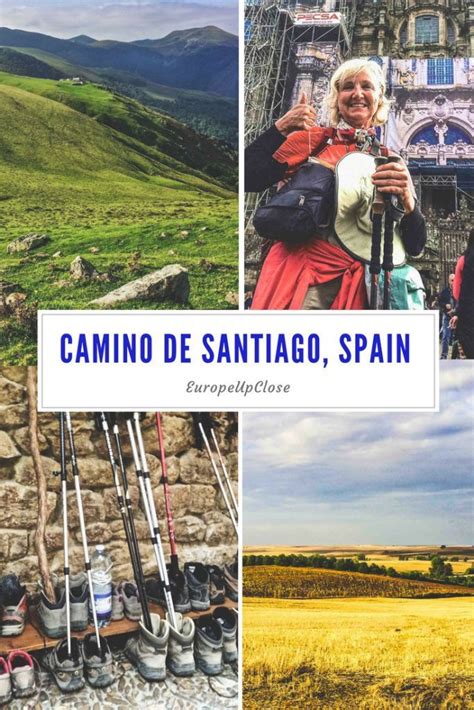Are you ready to embark on a transformative journey through the beautiful landscapes of Spain? The Camino de Santiago, also known as the Way of St. James, is a network of ancient pilgrimage routes that converge at the shrine of the apostle St. James in the Cathedral of Santiago de Compostela. This spiritual pilgrimage has been a significant religious and cultural experience for centuries, attracting thousands of pilgrims from all over the world.
In this blog post, we will delve into the rich history and origins of the Camino de Santiago, providing you with valuable insight into the roots of this sacred tradition. We will also guide you through the planning process, offering essential tips for a successful and fulfilling journey. Additionally, we will explore the spiritual significance of the Camino, revealing the profound impact it has had on countless pilgrims throughout history.
Whether you are a seasoned traveler or a first-time pilgrim, our detailed overview of the popular routes and itineraries of the Camino de Santiago will help you choose the path that best suits your preferences and capabilities. Finally, we will share practical tips to ensure that you are well-prepared for the challenges and rewards that await you on this remarkable spiritual odyssey. Join us as we unravel the magic of the Camino de Santiago and prepare for an unforgettable adventure.
History and Origins of the Camino de Santiago
The Camino de Santiago, also known as the Way of St. James, is a network of pilgrim routes leading to the shrine of the apostle St. James in the Cathedral of Santiago de Compostela in Galicia, northwestern Spain. The history and origins of the Camino de Santiago date back to the 9th century when the tomb of St. James was discovered. The route soon became one of the most important Christian pilgrimages during the Middle Ages.
It is believed that the disciples of St. James carried his body to Galicia and buried him in what is now the city of Santiago de Compostela. The pilgrimage grew in popularity throughout the Middle Ages, attracting not only religious pilgrims but also traders, soldiers, and individuals seeking forgiveness and spiritual fulfillment. The Way of St. James became a significant cultural, economic, and religious phenomenon, influencing the development of the Iberian Peninsula and the rest of Europe.
Throughout history, the Camino de Santiago has undergone periods of decline and resurgence. The route experienced a decline in the 18th and 19th centuries due to political unrest, epidemics, and the rise of secularism. However, in the 20th century, there was a revival of interest in the pilgrimage, and it became popular once again, attracting people from all over the world. Today, the Camino de Santiago is not only a religious pilgrimage but also a cultural and recreational phenomenon that continues to inspire and attract thousands of pilgrims every year.
The history and origins of the Camino de Santiago are steeped in legend, tradition, and spirituality. The pilgrimage route has evolved over the centuries, adapting to the changing social, political, and religious landscapes. The enduring appeal of the Camino de Santiago lies in its rich historical significance and its ability to connect people from diverse backgrounds through a shared journey of self-discovery and personal growth.
Planning Your Journey on the Camino de Santiago
When planning your journey on the Camino de Santiago, the first thing to consider is the route you want to take. There are several routes that lead to Santiago de Compostela, each with its own scenery, level of difficulty, and cultural attractions. You’ll need to research and choose the route that best suits your preferences and fitness level.
Once you’ve chosen your route, it’s important to plan your daily itinerary and accommodations. You’ll need to decide how many kilometers you want to walk each day, and where you’ll stay each night. Some people prefer to book accommodations in advance, while others enjoy the flexibility of finding a place to stay along the way. Whichever option you choose, it’s essential to have a general plan in place to ensure a smooth and enjoyable journey.
Another important aspect of planning your Camino de Santiago journey is packing. You’ll need to consider the weather and season in which you’ll be walking, as well as the weight of your backpack. It’s recommended to pack light, carrying only the essentials, as you’ll be carrying your backpack with you throughout the trip.
Lastly, practical considerations such as travel insurance, health care, and language barriers should also be planned for. It’s important to have a good understanding of the local health care system, especially if you have any pre-existing health conditions. Additionally, if you’re not fluent in Spanish, it’s beneficial to learn a few basic phrases to communicate with the locals.
The Spiritual Significance of the Camino de Santiago
Embarking on the Camino de Santiago is not only a physical journey, but also a spiritual one. Pilgrims from all over the world come to walk the ancient path to the shrine of the apostle St. James in Santiago de Compostela, Spain, seeking spiritual growth, introspection, and a sense of connection to something greater than themselves.
For many, the Camino represents an opportunity to disconnect from the noise of everyday life and connect with their inner selves. The long days of walking and simple way of life along the route offer a chance for deep reflection and contemplation.
The journey holds a deep spiritual significance for many religions, not just Christianity. It is a path that has been walked for centuries by people of all faiths, seeking enlightenment and a deeper connection with the divine.
At the end of their pilgrimage, many pilgrims experience a profound sense of peace and fulfillment, regardless of their religious beliefs. The journey becomes a metaphor for life itself, with its ups and downs, challenges, and moments of joy and revelation.
Popular Routes and Itineraries of the Camino de Santiago
One of the most famous pilgrimage routes in the world, the Camino de Santiago offers various routes and itineraries to suit different preferences and abilities. The most popular route is the Camino Francés, also known as the French Way, which starts in the French town of Saint-Jean-Pied-de-Port and ends in Santiago de Compostela. This route spans approximately 800 kilometers and passes through picturesque towns, rolling countryside, and historic landmarks.
Another popular option is the Camino Portugués, which begins in Lisbon or Porto and crosses into Spain through the historic cities of Tui and Valença. This route offers a different perspective on the pilgrimage experience, with its blend of coastal views and charming rural landscapes. For those seeking a shorter route, the Camino del Norte hugs the scenic northern coastline of Spain, leading pilgrims through lush greenery, rugged cliffs, and stunning ocean views.
For a more off-the-beaten-path experience, the Camino Primitivo is an ideal choice. This route, known as the Original Way, starts in the town of Oviedo and takes pilgrims through the mountainous terrain of Asturias before eventually joining the Camino Francés. The Camino Inglés, or English Way, is another less-traveled option, historically used by pilgrims arriving by sea from England and northern Europe.
Whichever route you choose, each offers its own unique charm, beauty, and cultural experiences. Whether you’re drawn to the traditional pilgrimage route of the Camino Francés or the coastal views of the Camino del Norte, embarking on the Camino de Santiago is a journey that promises unforgettable moments and personal growth.
Practical Tips for a Successful Camino de Santiago Experience
When embarking on the Camino de Santiago, it’s important to be well-prepared for the journey ahead. One of the most crucial tips for a successful experience is to invest in a good pair of walking shoes. Your feet will be your best asset on the Camino, so ensure that they are happy and comfortable throughout the trek. Additionally, it’s essential to pack light yet efficiently. Only bring the necessities and leave any unnecessary items behind to avoid weighing yourself down.
Another practical tip is to familiarize yourself with the route and have a rough idea of where you will be staying each night. This will alleviate any stress and allow you to fully embrace the experience without worrying about accommodation. Additionally, it’s crucial to stay hydrated and carry enough water with you at all times. The Camino can be physically demanding, and keeping yourself hydrated is key to staying healthy and energized throughout the journey.
Furthermore, it’s advisable to learn some basic Spanish phrases before beginning your journey. While many locals along the Camino will speak some English, having a few key phrases at your disposal will go a long way in making connections and navigating through different situations. Finally, make sure to pack some blister remedies and first aid supplies. It’s better to be safe than sorry, and having these items on hand can make a significant difference in your comfort and overall experience on the Camino de Santiago.
By following these practical tips, you can ensure a successful and memorable journey on the Camino de Santiago. Remember to embrace the adventure, stay open-minded, and enjoy every step of the way!
Frequently Asked Questions
What is the history and origins of the Camino de Santiago?
The Camino de Santiago, also known as the Way of St. James, is a pilgrimage route that has been followed for over a thousand years. It is believed to be the burial place of the apostle St. James, and pilgrims have been walking the Camino for spiritual reasons since the Middle Ages.
How should I plan my journey on the Camino de Santiago?
To plan your journey on the Camino de Santiago, you should first decide which route you want to take, considering factors such as distance, difficulty, and the type of experience you are seeking. It’s important to research and prepare for the trip, including booking accommodations and considering transportation options.
What is the spiritual significance of the Camino de Santiago?
The Camino de Santiago is considered a deeply spiritual and transformative experience for many pilgrims. It is a journey of self-discovery, reflection, and connection with nature, as well as an opportunity for personal growth and healing.
What are some popular routes and itineraries of the Camino de Santiago?
Some popular routes of the Camino de Santiago include the French Way, the Portuguese Way, the Northern Way, and the Via de la Plata, each offering a unique experience and passing through different landscapes and cultural sites.
What are some practical tips for a successful Camino de Santiago experience?
Some practical tips for a successful Camino de Santiago experience include packing light, wearing comfortable footwear, staying hydrated, and being open to meeting new people and embracing the unexpected along the way.






